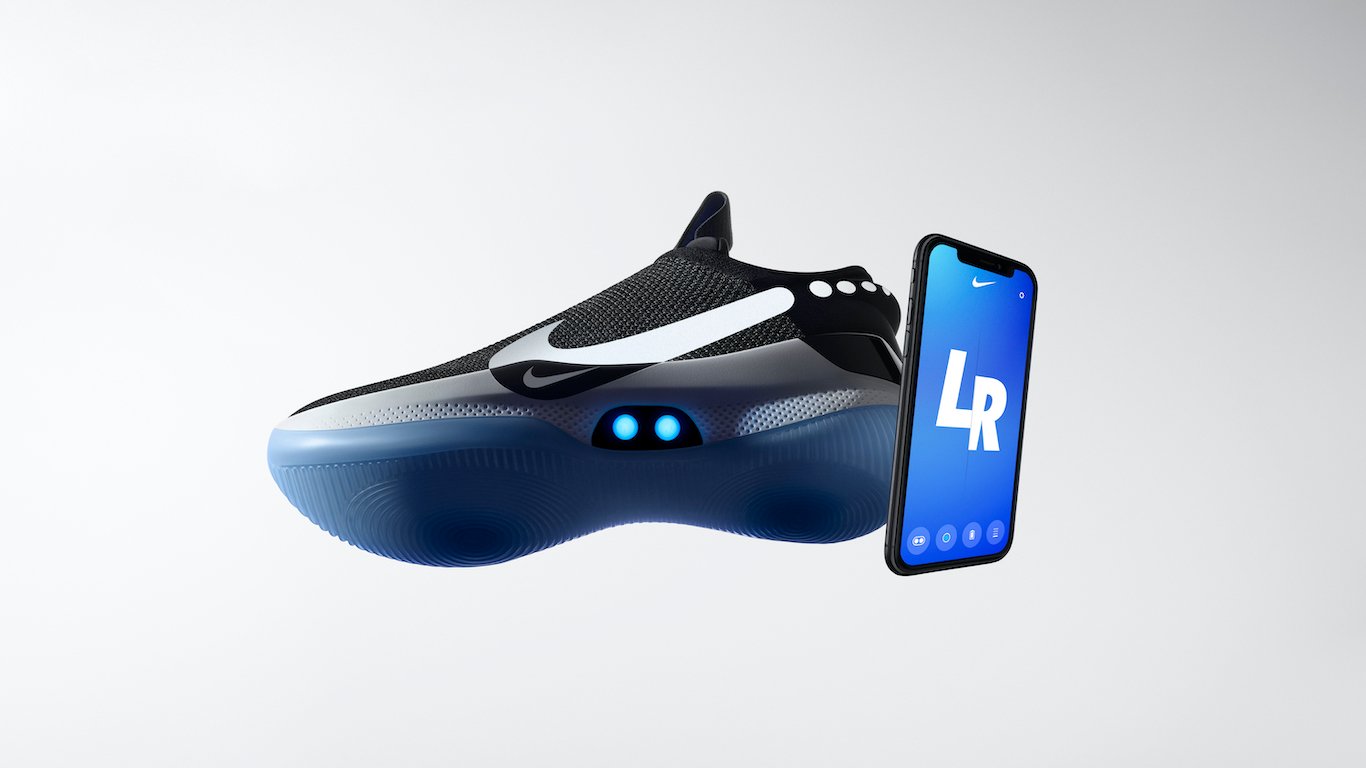

Nike Inc. (NYSE: NKE), the colossus of the athletic apparel and footwear industry, marries the world of sports with the financial markets, embodying resilience, innovation, and a pervasive global influence. With its foundation deeply rooted in the essence of competitive sports such as basketball, soccer, and tennis, Nike has not only outfitted athletes across the globe but also served as a beacon of inspiration for millions. As we pivot our gaze toward the horizon of 2030, the anticipation surrounding Nike’s trajectory in the stock market is palpable, underpinned by a rigorous blend of analysis and foresight. Let’s role up our sleeves and dive in. Are you ready?
The Present Landscape

As we stand in the early days of 2024, Nike boasts a formidable market capitalization of $123.9 billion, with its stock price delicately poised at approximately $101.76. Despite the preceding year’s turbulent waters, marked by a notable price correction of -21.42%, the foundational pillars of Nike’s business model remain steadfast. The brand’s diverse product portfolio, strategic global partnerships, and robust digital presence underscore its enduring strength and adaptability.
Financial Health and Metrics

– Revenue and Profitability: The recent financial disclosures highlight a subtle yet meaningful uptick in revenue, positioning Nike favorably against its sector’s average. The standout figure of its return on equity (ROE) underscores a highly efficient use of equity, a testament to Nike’s operational excellence.
– Dividend Yield: At an annual dividend yield of 1.45%, corresponding to a payout of $1.48 per share, Nike reaffirms its unwavering commitment to generating shareholder value. This dividend yield, while modest, is reflective of Nike’s balanced approach to growth and income.
– Valuation Ratios: Nike’s P/E ratio stands at 29.75, signaling a market valuation that anticipates future growth, albeit with the current earnings backdrop. The P/B, P/S, and P/CF ratios further elucidate the market’s optimistic yet cautious stance on Nike’s growth trajectory and operational efficiency.
Bull Scenario (2030)

Envisaging a scenario where Nike’s innovative prowess, market expansion strategies, and digital retail transformation outstrip expectations, we could witness a CAGR of 10-15% in revenue. Such dynamism could vault the stock price well above the $200 mark, buoyed by Nike’s expanding economic moat and heightened brand valuation.
The Brand’s Impact: Nike transcends the conventional boundaries of athletic wear, embodying a symbol of perseverance, achievement, and inspiration. The brand’s resonance with global sports icons across football, basketball, soccer, and tennis not only amplifies its market presence but also solidifies its appeal among investors and consumers alike. Nike’s commitment to innovation, sustainability, and social impact echoes far beyond its product lines, enriching its brand equity and enhancing its long-term stock potential.
Competitive Advantage: Nike’s strategic initiatives, particularly in digital transformation and direct-to-consumer channels, underscore its forward-thinking approach. The company’s adeptness at leveraging technology and data analytics has bolstered its market position, enabling personalized customer experiences and operational efficiencies. Nike’s economic moat, derived from its brand strength, innovation pipeline, and global scale, provides a durable competitive advantage. This moat not only shields Nike from the vagaries of market competition but also underpins its potential for sustained growth.
R&D and Product Diversification: Nike’s research and development (R&D) efforts underpin its commitment to delivering cutting-edge athletic apparel and footwear. The company’s focus on incorporating advanced materials and technologies, such as adaptive lacing systems and performance-enhancing fabric technologies, reinforces its market leadership position. Moreover, Nike’s product diversification strategy, catering to a wide array of sports and lifestyle segments, ensures resilience against market fluctuations and consumer trend shifts.
Product Innovation and Consumer Demand: At the heart of Nike’s enduring appeal is its unwavering commitment to product innovation. The company’s research and development efforts are squarely focused on advancing athletic performance and consumer lifestyle needs. Nike’s product portfolio, renowned for its quality, functionality, and aesthetic appeal, resonates with a broad consumer base, from professional athletes to casual enthusiasts. The growing global emphasis on health and wellness, coupled with the rise of athleisure trends, positions Nike favorably to capture increasing consumer demand.
Technological Advancements and Digital Engagement: Nike’s investment in technology extends beyond product innovation to encompass its sales channels and customer engagement strategies. The brand’s digital platform, including its e-commerce sites and mobile applications, has seen significant growth, a trend accelerated by the global pandemic. Nike’s ability to engage with consumers digitally, offering personalized shopping experiences and exclusive online content, strengthens its direct-to-consumer (DTC) initiative, a critical driver for margin improvement and sales growth.
Global Expansion and Market Trends: Nike’s global footprint, characterized by its expansive reach in emerging markets, represents a significant growth vector. The brand’s strategic market entries and localized offerings tailor to diverse consumer preferences, driving brand penetration and loyalty. The evolving landscape of international trade, digital commerce, and consumer behavior presents both opportunities and challenges for Nike. Adapting to these dynamics, from supply chain resilience to digital engagement strategies, will be pivotal in shaping Nike’s trajectory.
Base Scenario (2030)

A projection grounded in moderate growth and market equilibrium suggests a steady CAGR of 5-7% in revenues. This growth trajectory, reflective of consistent consumer demand and operational efficiency, would likely see the stock price stabilize in the $150-$170 range.
Bear Scenario (2030)

In a landscape riddled with increased competition and potential economic headwinds, Nike’s growth might taper, leading to a conservative CAGR of 2-3%. Such conditions would potentially peg the stock price in the vicinity of $120-$130, a scenario underscored by market saturation and competitive pressures.
Economic Considerations and Risks: The macroeconomic environment, including factors such as currency fluctuations, trade policies, and consumer spending trends, plays a crucial role in Nike’s operational and financial performance. Inflationary pressures and global economic downturns could impact consumer discretionary spending, potentially affecting Nike’s sales and profitability. However, Nike’s diversified business model and strategic hedging practices mitigate such risks, enabling the brand to navigate economic uncertainties with agility.
Final Thoughts

Looking towards the dawn of 2030, Nike’s journey is poised on a knife-edge between its storied legacy of innovation and the unpredictable tides of global markets. Amidst these uncertainties, Nike’s robust financial health, strategic agility, and the indomitable spirit of its brand present a compelling narrative for optimism. Investors, captivated by the allure of sports and the promise of enduring growth, may find in Nike a beacon of resilience and value. As Nike continues to navigate the evolving landscape of the athletic apparel and footwear industry, its focus on innovation, consumer engagement, and sustainable growth will be critical in realizing its vision for 2030 and beyond.
In this comprehensive analysis, 24/7 Wall St. has traversed Nike’s financial landscape, dissected its strategic positioning, and projected its potential future, offering readers a panoramic view of its prospects. Nike, with its blend of innovation, strategic foresight, and a deeply entrenched brand ethos, stands not just as a leader in its domain but as a symbol of growth and resilience in the portfolios of discerning investors.
As we look towards the future, Nike’s prospects as a leading figure in the athletic apparel and footwear industry are underpinned by its strategic initiatives, financial robustness, and the enduring appeal of its brand. The journey to 2030 will undoubtedly be marked by challenges and triumphs alike, but Nike’s commitment to growth, innovation, and sustainability positions it well to continue its legacy of success.
Many investors and enthusiasts watching Nike’s journey consider not just the financial metrics and stock price predictions but also the broader narrative of a brand that has continually evolved to meet the demands of a changing world. In Nike’s story, we find not just a company, but a reflection of the enduring spirit of sports—a testament to pushing boundaries, overcoming obstacles, and striving for excellence.
If you can’t get enough and want more, check out 4 Solid Bets in the Promising Retail-Apparel & Shoes Industry
Sponsored: Attention Savvy Investors: Speak to 3 Financial Experts – FREE
Ever wanted an extra set of eyes on an investment you’re considering? Now you can speak with up to 3 financial experts in your area for FREE. By simply
clicking here you can begin to match with financial professionals who can help guide you through the financial decisions you’re making. And the best part? The first conversation with them is free.
Click here to match with up to 3 financial pros who would be excited to help you make financial decisions.
Thank you for reading! Have some feedback for us?
Contact the 24/7 Wall St. editorial team.



